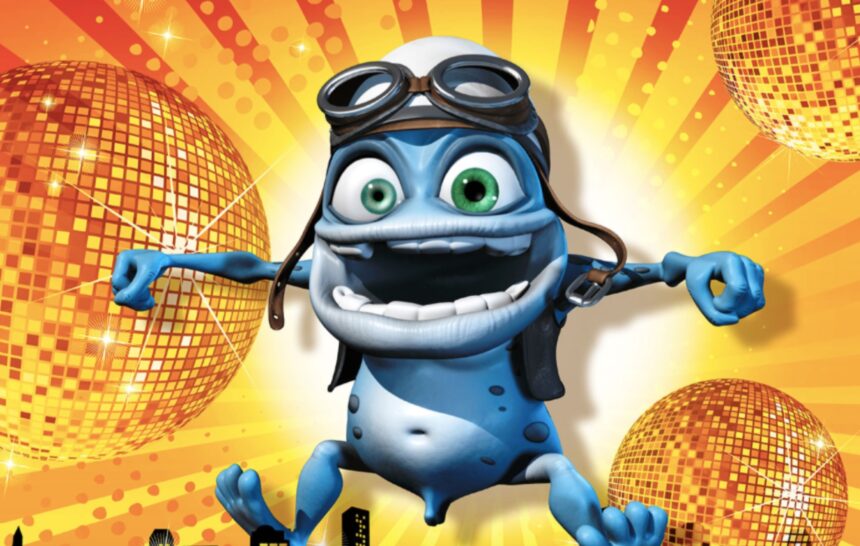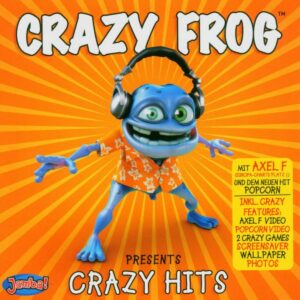In the early days of the internet, before TikTok, before viral dances, and before smartphones became an extension of our hands, a strange sound and a blue animated frog managed to take over the world. That strange creation was Crazy Frog, and its rise to fame is one of the most unexpected stories in digital history.
It was loud. It was weird. It was unforgettable. But how did it all begin? Let’s travel back in time to understand how Crazy Frog became the world’s most unlikely star.
A Noisy Idea Becomes a Global Sensation
In 1997, a teenage boy named Daniel Malmedahl from Sweden was playing around with sound effects. He recorded himself imitating the noise of a two-stroke engine—a high-pitched, buzzing kind of sound that sounded like “ding-ding-ding-ding.”
It was just for fun. He didn’t think anything would come of it. But like many internet stories, the audio clip was shared online, passed from person to person, and eventually became a minor internet curiosity.
Fast forward a few years. A Swedish animator, Erik Wernquist, heard the sound and got inspired. He created a short animation of a wild-looking blue frog bouncing around to the engine sound. The creature wore a helmet, had bulging eyes, and rode an invisible motorcycle. He named it “The Annoying Thing.”
But the internet would later know him as Crazy Frog.
From Meme to Mainstream
When the animation was uploaded online, people found it hilarious—and annoying. It quickly became one of those things you couldn’t escape. You’d hear the sound in chat rooms, see the video on early websites, and laugh or cringe whenever someone used it as a ringtone.
That’s when a mobile phone company called Jamster (also known as Jamba) stepped in. They saw dollar signs. In 2005, they began selling the sound as a premium ringtone, and branded the blue creature as “Crazy Frog.”
But Jamster didn’t stop at ringtones. They turned Crazy Frog into a music act. The character released a remix of “Axel F”, a famous 1980s movie theme. The song, combined with Crazy Frog’s bizarre noises, became a massive hit.
It reached #1 on the UK Singles Chart, beating Coldplay’s “Speed of Sound.”
Suddenly, Crazy Frog wasn’t just a ringtone. He was a pop star.
Heading: The Crazy Frog Era
After the success of “Axel F,” more music followed. Crazy Frog released full albums, including Crazy Hits and More Crazy Hits. There were music videos, TV ads, video games, toys, and even talk of a movie.
The internet couldn’t get enough. Or maybe it couldn’t escape.
People had mixed feelings. Some loved the humor and weirdness. Kids adored it. Others found it unbearable. In fact, Crazy Frog earned the nickname “the most annoying ringtone ever,” which, oddly enough, only made it more popular.
Even critics admitted that as much as people complained, they still remembered it. That’s the power of a catchy idea, even if it drives you a little crazy.
Why It Worked
Crazy Frog hit at just the right moment. In 2005, phones were becoming more personal. People wanted ringtones that stood out. The internet was also changing—funny videos and sounds were being shared quickly for the first time. Memes were still new.
Crazy Frog combined all of that: a sound, a character, a joke, and a song.
It also taught us something important about the internet. You don’t always need deep meaning or perfect design. Sometimes, silly wins. And in Crazy Frog’s case, silly made millions.
Fame Fades, But the Frog Hops On
Like many viral sensations, Crazy Frog’s time at the top didn’t last forever. By 2008, interest began to fade. Smartphones were rising, ringtones were no longer a big business, and people had new distractions online.
For a while, Crazy Frog disappeared from the spotlight.
But the story didn’t end there.
In 2021, Crazy Frog made a comeback. A new music video was released. Social media accounts came back to life. Nostalgic fans from the 2000s welcomed the return with open arms (and memes). New generations discovered the frog for the first time, and the cycle of laughter and annoyance began again.
The Lasting Legacy of Crazy Frog
It’s easy to laugh at Crazy Frog now. It was noisy, it was strange, and it didn’t make much sense. But it made an impact.
It showed how the internet could create global stars out of almost nothing. It proved that a funny idea, if timed right, could become a pop culture force. Before YouTube influencers or Instagram pets, there was Crazy Frog—a strange digital creation that got people talking, laughing, and dancing.
Crazy Frog also helped define a moment in tech history. The mid-2000s were a wild time for mobile phones, online videos, and digital marketing. The frog may have been annoying, but he was also ahead of his time.

Final Thoughts: The Noise That Echoed Around the World
So, what can we learn from Crazy Frog?
First, never underestimate the power of a good (or bad) idea. What started as a teenager making silly engine noises became a worldwide phenomenon. Second, timing matters. Crazy Frog arrived just when the world was ready for something odd and unforgettable.
And finally, it reminds us that the internet is full of surprises. You never know what will go viral next. It might be a dance. It might be a cat video. Or it might be another noisy frog riding an invisible motorcycle.
Whatever happens, we’ll always have the memory of Crazy Frog—blasting from phones, bouncing on screens, and making the whole world smile, even if just for a second.






